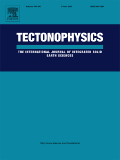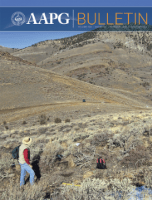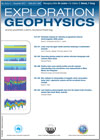
JOURNAL OF SEISMIC EXPLORATION
Scope & Guideline
Innovating Seismic Techniques for a Better Tomorrow
Introduction
Aims and Scopes
- Seismic Data Processing and Enhancement:
This area focuses on methods for improving the quality and interpretability of seismic data, including noise attenuation, data reconstruction, and image enhancement techniques. - Application of Machine Learning and AI in Seismic Exploration:
The journal highlights the integration of artificial intelligence and machine learning approaches, such as deep learning and convolutional neural networks, to automate and enhance various seismic analysis tasks. - Geophysical Modeling and Inversion Techniques:
Research in this domain covers advanced methodologies for seismic modeling and inversion, including full-waveform inversion and various regularization techniques that improve parameter estimation. - Environmental and Resource Exploration:
The journal includes studies related to the application of seismic techniques in resource exploration, such as oil, gas, and mineral resources, as well as environmental monitoring. - Theoretical and Computational Seismology:
This encompasses the development of theoretical frameworks and computational algorithms to better understand seismic wave propagation and the physical characteristics of subsurface materials.
Trending and Emerging
- Deep Learning and Neural Networks for Seismic Applications:
There is a growing trend in utilizing deep learning techniques, particularly convolutional neural networks, for tasks such as event detection, data enhancement, and inversion, showcasing the journal's commitment to incorporating modern computational methods. - Integration of Multi-Scale and Adaptive Techniques:
Recent publications emphasize the need for multi-scale approaches and adaptive techniques in seismic data processing, indicating a trend towards methods that can dynamically adjust to varying data characteristics. - Uncertainty Quantification in Seismic Inversion:
Emerging themes include the quantification of uncertainties in seismic inversion processes, reflecting a broader recognition of the importance of reliability and accuracy in geophysical modeling. - Interdisciplinary Approaches to Seismic Exploration:
An increasing number of studies are integrating insights from various fields, such as machine learning, physics, and environmental science, to enhance seismic exploration techniques and applications. - Real-Time Data Processing and Monitoring:
There is a notable trend towards real-time processing methodologies, which are vital for applications such as monitoring microseismic events and immediate response in environmental assessments.
Declining or Waning
- Traditional Seismic Reflection Techniques:
There has been a noticeable decrease in publications solely focused on conventional seismic reflection methods, as newer techniques and technologies emerge, leading to a shift towards innovative data processing and interpretation methods. - Basic Statistical Methods in Seismic Analysis:
Research employing basic statistical analysis without the integration of more advanced computational techniques or machine learning approaches appears to be declining, indicating a preference for more sophisticated methodologies. - Single-Domain Seismic Applications:
Studies focusing exclusively on single-domain applications of seismic data (e.g., only seismic reflection or refraction) are becoming less common, as interdisciplinary approaches that combine various geophysical methods gain traction.
Similar Journals

GEOPHYSICAL JOURNAL INTERNATIONAL
Connecting Researchers to the Heart of Earth's ScienceGEOPHYSICAL JOURNAL INTERNATIONAL, published by the esteemed Oxford University Press, stands as a premier platform for advancing research in the realms of Geophysics and Geochemistry. With a rich history spanning from 1922 to 2024, this journal not only adheres to the highest scholarly standards but has also achieved remarkable recognition, evidenced by its impressive ranking in the Scopus database—#32 in Geophysics and #48 in Geochemistry and Petrology, placing it within the top quartiles of its field. Researchers and professionals will appreciate its comprehensive scope and commitment to disseminating vital research findings, which significantly contribute to our understanding of the Earth's processes. Although it does not offer open access, the journal's Q1 quartile status underscores its influence and importance in shaping contemporary scientific discourse. Whether you are a seasoned researcher or a budding student, GEOPHYSICAL JOURNAL INTERNATIONAL is an indispensable resource for essential knowledge and groundbreaking studies in the geophysical sciences.

Quaderni di Geofisica
Fostering Scholarly Communication in Geophysics and BeyondQuaderni di Geofisica is a distinguished academic journal published by the IST NAZIONALE GEOFISICA & VULCANOLOGIA-INGV in Italy, focusing on pivotal areas within the fields of geophysics, geology, and computer applications in Earth sciences. Since its inception, this journal has served as a vital platform for the dissemination of innovative research and methodologies, advancing our understanding of geophysical phenomena and their implications. The journal spans various converged years from 2007 to 2019 and 2021 to 2024, allowing for a comprehensive examination of contemporary developments in the field. Despite being categorized in Q3 and Q4 quartiles by Scopus, it plays a critical role in bridging the gap between theory and practice for researchers, professionals, and students alike. The journal's commitment to fostering scholarly communication is underscored by its strategic focus on multidisciplinary studies, making it an essential resource for those engaged in Earth sciences research. Readers can access the journal's content through institutional libraries or by direct request, ensuring a broad reach and ongoing contribution to the global scientific community.

MARINE GEOPHYSICAL RESEARCH
Illuminating the interplay of earth and ocean.MARINE GEOPHYSICAL RESEARCH is a prominent journal published by Springer, dedicated to advancing the field of marine geophysics, with significant contributions to geochemistry, petrology, and oceanography. Established in 1970 and currently running its volumes until 2024, this journal operates as a key resource for researchers and professionals focused on understanding the complexities of marine environments and geological processes. With a strong foothold in academic rankings—positioned in Q2 for both Geophysics and Oceanography, and Q3 for Geochemistry and Petrology in the 2023 category quartiles—MARINE GEOPHYSICAL RESEARCH provides a rigorous platform for high-quality research dissemination. Although not an open-access journal, it offers invaluable insights into marine geophysical phenomena, thus appealing to a diverse audience of scholars and practitioners. The journal’s relevance and impact are further underscored by its Scopus ranks, situating it competitively within the Earth and Planetary Sciences domain. Researchers and students seeking to stay abreast of cutting-edge developments and methodologies in marine geophysics will find it an essential addition to their academic resources.

Bulletin of Geophysics and Oceanography
Exploring Innovative Insights in Geophysics and OceanographyBulletin of Geophysics and Oceanography is a distinguished open-access journal published by the IST NAZIONALE DI OCEANOGRAFIA E DI GEOFISICA in Italy, dedicated to advancing knowledge in the multidisciplinary fields of geophysics, oceanography, and related engineering disciplines. Since its inception in 2000, the journal has been pivotal in providing a platform for innovative research and comprehensive reviews that support the scientific community's efforts to understand Earth's dynamic systems. With an ISSN of 2785-339X and an E-ISSN of 2785-2970, the journal operates under an open-access model, ensuring that groundbreaking discoveries reach a wider audience without barriers. The Bulletin is categorized in the Q4 quartile for the years 2023 in Computers in Earth Sciences, Geophysics, Geotechnical Engineering and Engineering Geology, and Oceanography. It ranks within the 41st and 37th percentiles in geophysics and oceanography respectively, highlighting its emerging influence in the scientific community. The journal welcomes submissions that span across fundamental research and applied sciences, aiming to foster collaboration among researchers, professionals, and students, thereby contributing to the sustainable management of oceanic and terrestrial resources.

TECTONOPHYSICS
Leading the Charge in Tectonic Research ExcellenceTECTONOPHYSICS is a leading journal published by Elsevier that has been at the forefront of earth and planetary sciences since its inception in 1964. With both its print and e-ISSN identifiers (0040-1951 and 1879-3266), the journal offers a reputable platform for disseminating high-quality research in Earth-Surface Processes and Geophysics, proudly positioned in the Q1 category for both fields in 2023. With a Scopus ranking of #43 out of 179 in Earth-Surface Processes and #43 out of 165 in Geophysics, TECTONOPHYSICS demonstrates a strong impact, making it an essential resource for researchers and professionals involved in the geological and geophysical sciences. Published in the Netherlands, TECTONOPHYSICS is committed to advancing knowledge in tectonics and related disciplines, fostering innovative research that impacts our understanding of Earth's dynamic processes. The journal invites contributions that push the boundaries of science, making it a must-read for academia and industry alike.

Earthquake Science
Empowering Research through Open AccessEarthquake Science is a prominent open access journal that has been serving the scientific community since its inception in 2009, published by KEAI PUBLISHING LTD. With an ISSN of 1674-4519 and an E-ISSN of 1867-8777, this journal has established itself as a significant platform for the dissemination of research in the fields of geology, geophysics, and geotechnical engineering, evident from its Q2 ranking in 2023 across these categories. Based in China, Earthquake Science aims to facilitate knowledge sharing and foster interdisciplinary collaboration by publishing a range of high-quality articles, reviews, and research papers demonstrating advancements in understanding seismic activity and its impacts. Its commitment to open access since 2015 ensures that valuable insights are available to researchers, professionals, and students globally, thereby supporting critical inquiries into earthquake mechanisms and risk management strategies. Explore the latest findings and contribute to the ongoing conversation in the evolving landscape of earthquake science.

Russian Journal of Earth Sciences
Connecting scholars to the heart of geoscience.Russian Journal of Earth Sciences, published by the esteemed Geophysical Center RAS, is a pivotal resource for researchers and professionals in the field of Earth and Planetary Sciences. With an ISSN of 1681-1208 and an E-ISSN of 1681-1208, this journal has demonstrated a significant trajectory since its inception in 1998, currently converging towards its 2024 goal of disseminating innovative research. The journal holds a respectable position within the academic community, ranked Q3 in Earth and Planetary Sciences by Scopus, placing it at the 44th percentile among the most relevant journals in the field. Though it operates under a traditional access model, its commitment to advancing scientific knowledge ensures that vital research findings are available to a global audience. Located in Moscow, Russian Federation, the journal not only serves as a platform for high-quality research but also fosters a collaborative environment for scholars aiming to contribute to the understanding of our planet's geological phenomena.

AAPG BULLETIN
Unlocking the secrets of our planet's resources.AAPG BULLETIN, published by the American Association of Petroleum Geologists, stands as a premier journal in the fields of Earth Sciences and Energy Engineering. With an impressive history spanning from 1968 to 2023, the journal has established itself as a valuable resource for researchers and professionals alike, focusing on a wide array of topics including geology, geochemistry, petrology, and fuel technology. Its robust standing in the academic community is reflected in its recognition as a Q1 journal across multiple categories such as Earth and Planetary Sciences, Energy Engineering, and Geology, with notable rankings in prestigious databases like Scopus. Although not an open-access journal, the AAPG BULLETIN provides vital insights and studies that advance our understanding of Earth processes and energy resources. It serves as an essential platform for disseminating cutting-edge research, fostering collaboration, and inspiring the next generation of scientists and engineers in the pursuit of sustainable energy solutions.

Exploration Geophysics
Exploring New Frontiers in Geology and GeophysicsExploration Geophysics is a prestigious journal published by Taylor & Francis Ltd., prominently focusing on the interdisciplinary fields of geology and geophysics. Established in 1970 and continuing its legacy to 2024, this journal serves as a vital platform for researchers, professionals, and students alike, disseminating cutting-edge research and innovative methodologies in earth sciences. With a robust impact factor that highlights its academic influence, and classified in the Q3 category for both geology and geophysics, it ranks among the notable publications in the field, placing it in the 51st and 50th percentiles of its respective categories. Although available through standard subscription access, the journal encourages engagement from a diverse readership aimed at exploring the intricacies of earth processes, resource exploration, and environmental evaluations. By contributing valuable insights and fostering collaborations, Exploration Geophysics continues to play a crucial role in advancing the understanding of our planet's subsurface dynamics.

COMPUTATIONAL GEOSCIENCES
Exploring the Intersection of Geosciences and ComputationCOMPUTATIONAL GEOSCIENCES, published by SPRINGER, is a distinguished journal in the fields of Computational Mathematics, Computational Theory and Mathematics, and Computer Science Applications. With a focus on the intersection of computational methodologies and geosciences, this journal serves as a vital platform for researchers, professionals, and students seeking to advance the understanding and application of computational techniques in earth sciences. The journal has consistently maintained a strong standing, evident from its impressive Q2 quartile ranking in 2023 across various categories, and significant Scopus rankings in Computational Mathematics and Earth and Planetary Sciences. The global impact of this journal is underscored not only by its rigorous peer-review process but also by its commitment to disseminating high-quality research that bridges theoretical advances and practical applications within the earth sciences domain. Scientifically rich and culturally diverse, COMPUTATIONAL GEOSCIENCES aims to foster collaboration and innovation while addressing pressing challenges posed by our changing planet, making it an essential resource for the academic community.